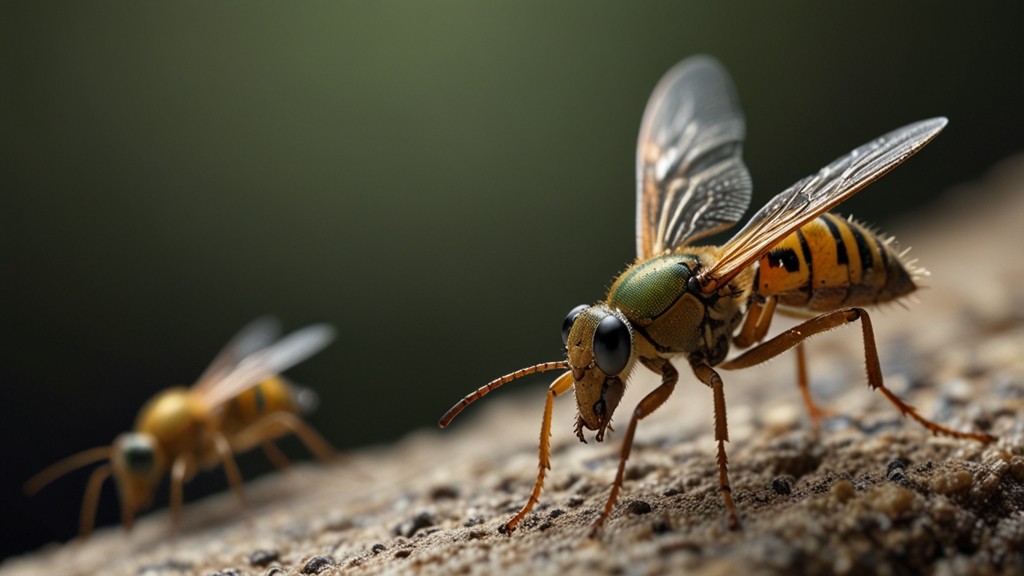Migrating Insects Discover the Great Journeys of Tiny Creatures
When we think of migration, often birds or large mammals come to mind. However, the world of tiny creatures presents equally awe-inspiring journeys. Migrating insects, despite their size, undertake significant travels that contribute to the balance of our ecosystems. From the monarch butterflies that traverse continents to tiny aphids caught in wind currents, these small but mighty travelers offer a fascinating glimpse into the resilience and intricacy of nature.
Monarch Butterflies: A Continental Odyssey
Perhaps the most well-known among migrating insects are monarch butterflies. Each year, millions of these delicate creatures embark on a remarkable journey spanning thousands of miles from North America to Mexico. Monarchs rely on environmental cues such as temperature and daylight to navigate, even though no individual butterfly completes the round trip. Instead, the journey is completed over multiple generations, with each set of butterflies genetically encoded to continue the route.
“The journey of the monarch butterfly is not just a natural wonder but a testament to the extraordinary capabilities of even the smallest creatures in the animal kingdom.”
Once they reach their destination in the forests of central Mexico, monarch butterflies rest and lay the groundwork for the next generation. This migration is critical not only for the survival of the species but also for the pollination of a variety of plants along the way.
Dragonflies: Wind Riders of the Sky
Dragonflies are another example of remarkable insect migrants. Species such as the globe skimmer dragonfly undertake transoceanic migrations that span thousands of miles. These journeys are often accomplished by catching prevailing winds that carry them across vast expanses of water and land. Their migration is less understood compared to monarch butterflies, but the evidence suggests that dragonflies rely on a combination of wind patterns and instinctual navigation methods.
Studies indicate that globe skimmer dragonflies migrate from India across the Indian Ocean to East Africa, a journey that rivals some of the longest migrations known in the animal kingdom. Such feats are incredible, considering the dragonfly's relatively short lifespan and physical stature.
Desert Locusts: Swarms of Survival
In contrast to solitary travelers like butterflies and dragonflies, desert locusts are infamous for traveling in enormous swarms. These locusts can devastate crops, but their migrations are a survival strategy triggered by environmental factors such as rain and temperature changes. When conditions are right, locusts congregate and form swarms that can travel significant distances in search of food.
“Desert locust swarms are both a natural marvel and a potential ecological disaster, showcasing the duality of migrating insects.”
The swarming behavior of desert locusts underscores the importance of migration in the survival strategies of many insects. By traveling en masse, locusts increase their chances of finding suitable habitats and resources, albeit often at the expense of human agricultural activities.
Aphids and Moths: Tiny Creatures, Big Impacts
Smaller insects such as aphids and moths also undertake impressive migrations, though they are often less noticed. Aphids, for example, rely on wind currents to travel significant distances. These tiny insects can be carried across continents, spreading plant viruses and impacting agriculture on a global scale. Similarly, some moth species, like the Silver Y moth, migrate over large areas, navigating using a combination of the Earth's magnetic field and visual landmarks.
The impact of these tiny migrants is profound. They play vital roles in pollination, pest control, and as part of the food chain. Their migrations ensure genetic diversity and adaptation across various environments, contributing to the resilience of ecosystems worldwide.
Conclusion
The migration of insects is a testament to the extraordinary abilities of some of nature's smallest creatures. Despite their size, they undertake journeys that are as significant and complex as those of much larger animals. Monarch butterflies, dragonflies, desert locusts, aphids, and moths each demonstrate the diverse strategies and navigational skills that insects employ to survive and thrive in their ever-changing environments.
Understanding these migrations not only highlights the incredible capabilities of insects but also underscores the intricate balance of ecosystems. As we continue to study and learn from these tiny travelers, we gain insights into the resilience and interconnectedness of life on Earth.










